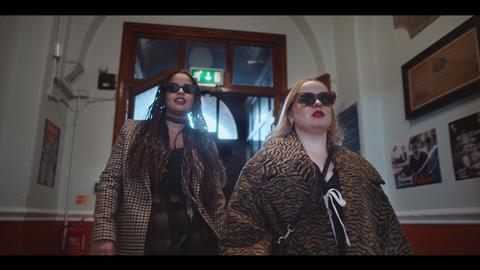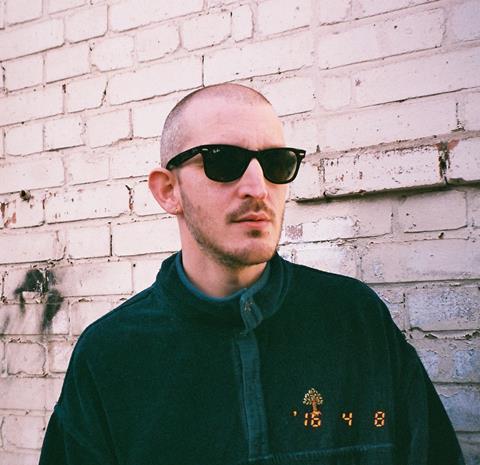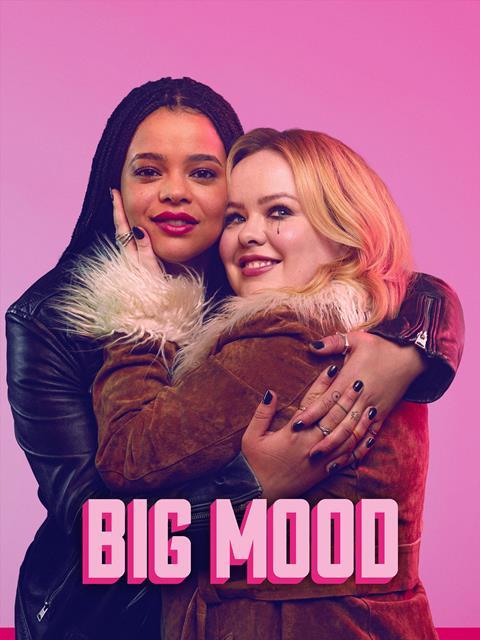Jeremy Warmsley explains the creative process behind the bespoke compositions he made for the Channel 4 comedy-drama series

Composer, indie singer-songwriter and part-time popstar in the band Summer Camp, Jeremy Warmsley has carved out a successful career as a songwriter-for-hire for TV and film.
His latest project is Channel 4 comedy-drama Big Mood, which features an original Warmsley composition – Turning Grey – made especially for the production.
Warmsley’s previous TV credits include Simon Amstell’s feature Carnage, BBC1 comedy series The Power of Parker, documentaries including Beyond Clueless and Fish Story and Netflix/BBC drama Wanderlust.
He also wrote the theme song for CBeebies/HBO Max children’s animation Love Monster.
Big Mood was written by Camilla Whitehill, directed by Rebecca Asher and stars Nicola Coughlan and Lydia West.

Broadcast Tech caught up with Warmsley (pictured above) to find out more about the creative process involved in making the music for Big Mood, including how he got involved in the project in the first place.
“I was very lucky because Camilla recognised my name from the soundtrack for Beyond Clueless, when I was playing with my band, Summer Camp. She loved that film, and she loved the soundtrack, so straightaway she was like, let’s have a meeting with him.”
By the time Warmsley started work on the production, a rough assembly of a few episodes had already been cut together, and the rest of the series was also close to being locked.

The cuts already included temp music and commercial music.
The next step was for Warmsley, together with editor Robin Peters, Camilla Whitehall, producer Georgie Fallon and director Rebecca Asher, to decide which musical elements would be removed and replaced by music composed by Warmsley and where the music could slot into the narrative.
“Everyone had strong opinions on music, and it was just a case of going through it and saying, ‘I think you could have some music here, and you could have some music here.’ Once you’ve done that, you have what’s called a spotting session where you end up with a plan for what’s going to happen.
“In the first episode, the first thing I said was, ‘You’ve got some music here, but I don’t know if you actually need it.’ And I think they really liked that because a lot of the times a composer will come in and just start plastering music on everything. I’m a strong believer in less is more and whenever possible, I like to not use music. In that way, when there is music, it has more impact and it’s not just wallpaper.”
Warmsley said that with comedy there are additional elements to factor in to ensure music doesn’t get in the place of a joke – “If it steps on a joke it can really ruin it,” he says.
With the spotting notes sorted out, the next step is sketching out the music. Warmsley explains: “We discussed what the sound of the score was going to be, and I basically just had a crack at it. I knew it was going to be in the pop music genre.”
Rather than producing demos or rough ideas at this stage, Warmsley produces polished versions of everything that he would be happy to put on air. He explains: “I don’t like to send anyone anything that I wouldn’t be comfortable with going out in the final version. I’ve got a nice home studio and can mix my own projects, so I tend to try and deliver as finished a product as possible.”
The feel of the music for Big Mood was fairly well defined from episode to episode, as each episode has a distinct mood of its own. As Warmsley explains: “Every episode is like a set piece. The first episode was more of a sitcom, the second episode is a pastiche of a horror, and the sixth episode is genuine horror. So, the score for the second episode is this horror pastiche, and the fourth episode is at a pagan festival, so all the music is this kind of pagan music with mandolins, hand drums, bells, flute and harp.”
Warmsley spent the next few weeks writing and recording his compositions for Big Mood, which he then sent over to the production team. They received an enthusiastic response with the usual feedback to tweak a few things here and there.
“People will say things like, ‘Can this have a bit more energy?’ or, ‘Can this be a bit moodier?’, ‘Can this be a bit brighter?’, and you just respond to that and try and, you know, put your ego to one side and get something that works for everyone.”
Securing the rights to some of the commercial tracks the team had intended to use, alongside the music from Warmsley, proved problematic, due to budgets, so he was asked to create some additional music for these spots.
Warmsley said: “I’m always wary in that situation that we don’t just copy something that already exists. I like to give a show its own unique voice and it’s hard to do that if you’re copying something that’s already there.”
The process of replacing songs used in temp tracks can typically be challenging as people get used to the existing tunes and can be resistant to change.
Warmsley explains: “There’s a bit of a psychological phenomenon whereby once you see something and hear something alongside it, especially if you’re editing something and you watch it ten times over, it becomes very hard to unhear it.
“One of the editors I work with makes sure to change up the music every couple of weeks if they know they’re not going to keep it, just so they don’t get too attached to it.”
One of the pieces Warmsley ended up writing for Big Mood was a new indie rock tune called Turning Grey.
Warmsley said: “They got to episode five, and there was a section where they knew it needed a song and they just couldn’t find the right one. So, they asked me to write something. It starts off as background music playing in a pub as one character comes to see another, and then it gradually morphs from being background music to scoring the sequence. Camilla and I sat down and talked about what the characters were going through at that moment and what was on their mind, and I took that and ran with it.”
Turning Grey receives about 40-50 seconds of air and comes back in the credits as well. Warmsley has promoted the track as a single online (see below), having picked up interest in the song following the TX of the series.





No comments yet